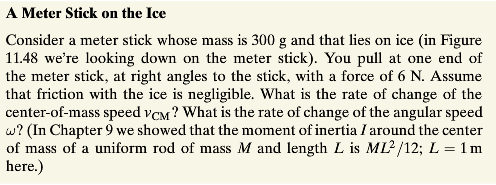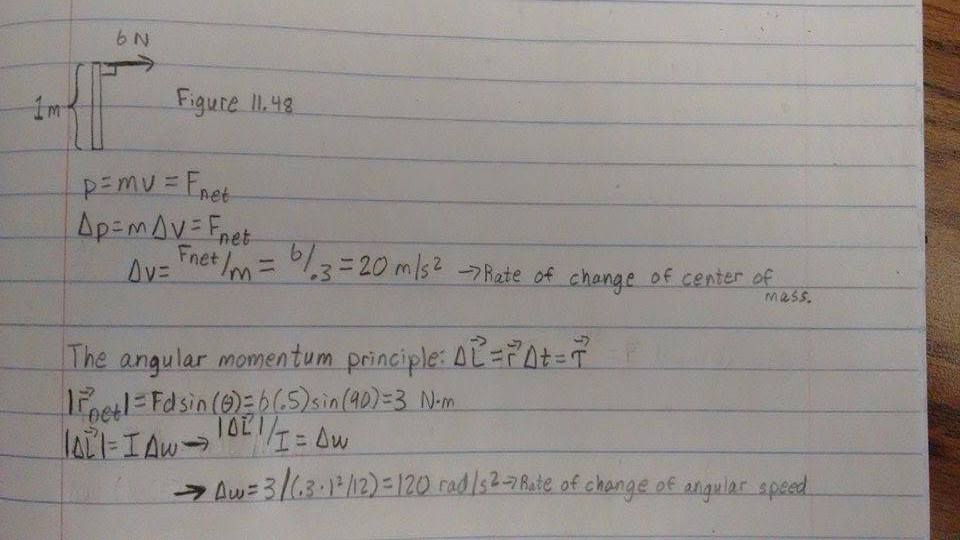Systems with Nonzero Torque: Difference between revisions
| Line 50: | Line 50: | ||
==History== | ==History== | ||
This concept doesn't have it's own history since it's just a section under torque, so refer to http://www.physicsbook.gatech.edu/Torque#History for more information. | |||
== See also == | == See also == | ||
Revision as of 23:43, 5 December 2015
Claimed by nvohra3.
In certain systems, external torques have an effect on a system's angular momentum. Since these external forces do not sum to zero, we end up with a system with nonzero torque.
The Main Idea
With previous systems involving torque, we've been fortunate enough to have systems where the net torque is non-zero, hence [math]\displaystyle{ \vec{L}_{final} = \vec{L}_{initial}. }[/math]
See systems with zero net torque in "See Also" section below for more information.
However, we're not always fortunate enough to have such systems. In such cases, our computations become a little more complicated, and we'll see how below.
A Mathematical Model
So the angular momentum principle is the following: [math]\displaystyle{ {\frac{d\vec{L}}{dt}}= \vec{r} * \vec{F}_{net} = \vec{т}_{net} }[/math]
A Computational Model
How do we visualize or predict using this topic. Consider embedding some vpython code here Teach hands-on with GlowScript
Examples
Taken from sources listed at bottom of page.
Simple
A constant net nonzero torque is exerted on an object. Which of the following quantities cannot be constant for this object?
A) Moment of inertia
B) Center of mass
C) Angular momentum
D) Angular velocity
E) Angular acceleration
Solution/Explanation:
C, D. Why?
A) Moment of inertia does not change depending on whether torque is exerted on an object; moment of inertia depends on the object and axis of rotation, nothing more.
B) Center of mass doesn't change with applied torque as well.
C) Angular momentum is equal to inertia times angular speed, and we establish below that angular velocity changes.
D) Angular velocity changes since a constant force is being applied to the object, so it's speed/velocity must inherently increase.
E) Because the torque being applied is constant, angular acceleration does not change (remember, acceleration is a measure of the rate of change of velocity!).
Middling
Connectedness
- How is this topic connected to something that you are interested in?
- How is it connected to your major?
- Is there an interesting industrial application?
History
This concept doesn't have it's own history since it's just a section under torque, so refer to http://www.physicsbook.gatech.edu/Torque#History for more information.
See also
A general description of torque: http://www.physicsbook.gatech.edu/Torque
External links
A brief overview on the topic: [1]
References
Matters and Interactions: 4th Edition
WebAssign
College Physics: Ninth Edition by Raymond Serway and Chris Vuille

